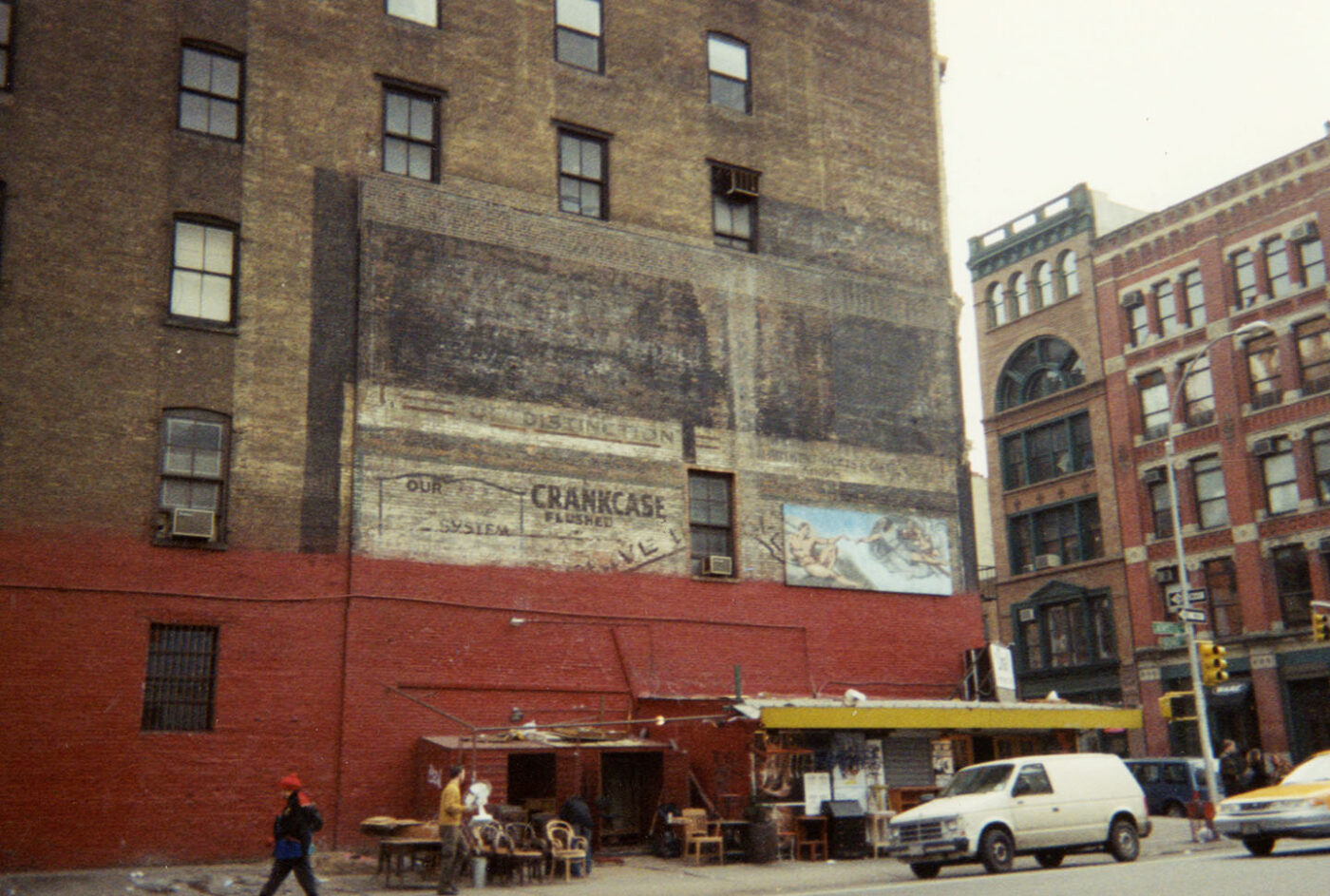Ghost Signs Abound in Our Historic Image Archive
A year or two into my career as a historic preservationist, I was accused (in good humor) of being a warden of “the ephemera of New York.” I tended toward a particular interest in protecting the seemingly minor and often transient aspects of our built environment: attributes such as vault lights, sidewalk grates, and paving, or the specific placement of things like street signs and tree guards. This relative minutiae might not be what initially comes to mind when one thinks of preserving landmarks in the city, but it’s in the unique, hyper-local, quirky details that I discovered a sense of place in our neighborhoods.
Sure, Greenwich Village is identified by its Greek Revival brick-and-brownstone row houses, its angled streets, and the focal point of Washington Square Park, but what about its boot scrapers, for example? They might not be the most prominent of building features, but they add character and provide a reference point to understand how we used our streets and stoops in the past.

Another category of the ephemera of our streetscapes is the “ghost sign,” of which Village Preservation’s Historic Image Archive contains a record of many. Ghost signs are the faded, hand-painted advertising signs found on historic buildings, usually painted on brick, that remain long after the original use of the building and/or advertising intent has changed. There are plenty of these signs still to be seen throughout our neighborhoods. They are a fascinating, tangible record of the past.
Some of the images found in our collection highlight signage that is present today, while others document ghost signs that were already a fading echo of the past when the photographs were taken, and have since been either painted over or covered when new construction obscured the facade in question from view. Hand-painted signs are an advertising tool still used in certain locations today, especially in historically manufacturing areas such as Gansevoort, NoHo, and SoHo; perhaps those signs, too, will eventually fade into history as “ghosts.”
Here are just a few examples of the ghost signs and their stories preserved within our Historic Image Archive. If you are inspired to hunt through the archive yourself, there are many more to be found!
122 Greenwich Avenue – from the Linda Yowell Collection

This image depicts the old Wellner Motors sign, which survived as a ghost sign for decades after the garage it was advertising had closed. The sign was sandblasted off in 2008, in anticipation of the new building that was to be constructed at the adjacent parking lot. A couple years prior, the Hines Development Co. proposed to build an 11-story, 128-foot-tall undulating glass-walled apartment building at 122 Greenwich Avenue (at 13th Street and 8th Avenue), within the Greenwich Village Historic District. Village Preservation opposed the design as inappropriate for the district, but the building was approved by LPC and DOB in 2007.
20 Bond Street/363 Lafayette Street – from Carole Teller’s Changing New York, Part 5

This is an interesting one, in part because you can see the multiple layers of advertising signs that were painted on top of each other over time. The clear evidence of historic signage here is one of the factors that convinced the Landmarks Preservation Commission to approve a program for painted wall signs to be installed at this location once again, as of 2021. The permit to do so is valid through 2031, and allows advertising signs to be painted here on a rotating basis. In this way, the history of recurring painted signage at the facade lives on, though the ghost sign is now covered.
While the party wall, and advertising sign, are technically owned by 363 Lafayette Street, a contemporary building that now sits on the lot in front, this wall is physically part of the adjacent building, 20 Bond Street, where the artist Chuck Close lived and worked for many years. It is part of the NoHo Historic District Extension, which was designated in 2008.
62 Cooper Square – From the Robert Fisch Collection

Some signs are carefully maintained, even after they no longer serve their original purpose as advertisements for an active business. One example still found in NoHo today is at 62 Cooper Square. Known as the “Carl Fischer Music Building,” this 12-story tower was designed by architect W.K. Benedict and purpose-built for the company from 1922-23. For 75 years, it housed the sheet music publishing company’s offices, printing press, center for production and distribution operations, and a vast retail store at the ground floor. It was known as a mecca for musicians citywide, with its extensive catalog of both popular and obscure sheet music to be found in-house.

While Carl Fischer vacated in 1999, and now divides its operations between Wall Street and Pennsylvania, the Cooper Square building, now converted to condos, still prominently displays the sign featuring an oversized eighth note with accompanying text, “Carl Fischer / Music Publisher Since 1872” at its exposed north facade. Since the building is located within the NoHo Historic District, any changes to this signage would have to be approved by the Landmarks Preservation Commission.
Email info@villagepreservation.org if you’d like to donate your own images to the archive.
